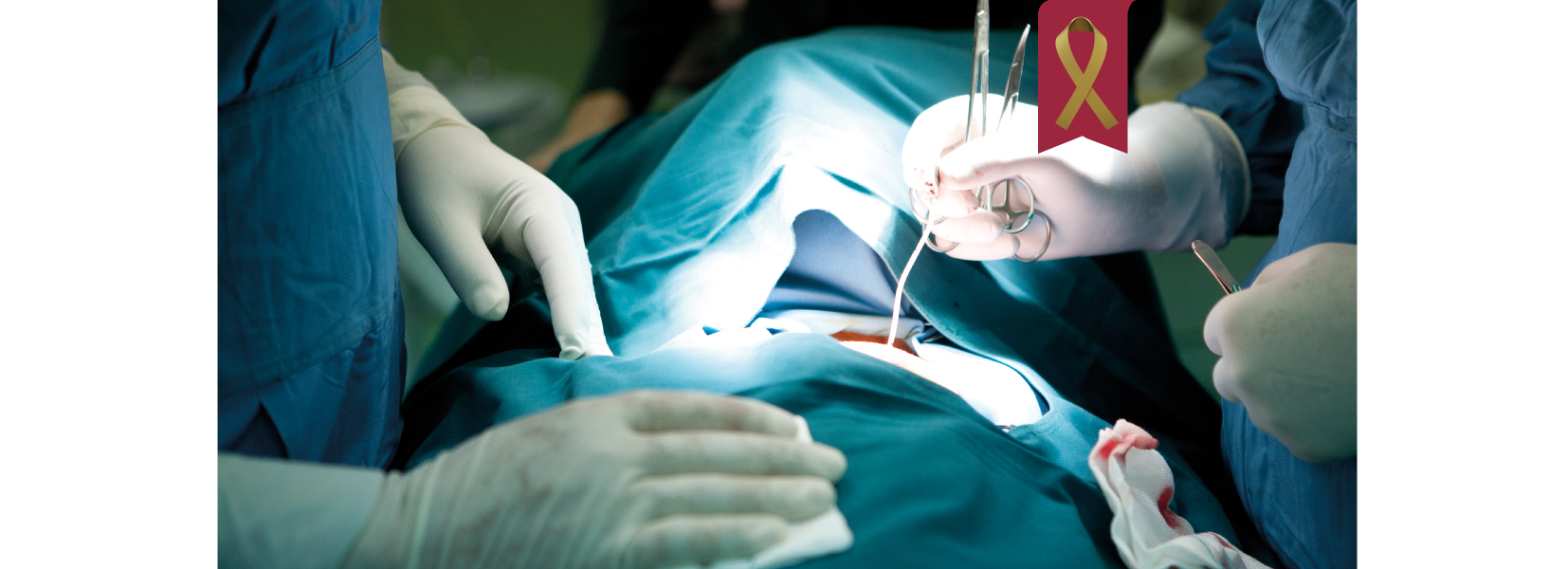
Surgery; A Treatment for Childhood Cancer
- 18 September 23
- 528 revirew
- 0 comment
In some types of cancers, chemotherapy and radiation therapy are not effective enough for treatment, and surgery is the only known treatment method. Surgeries can be preventive, diagnostic or therapeutic. In preventive surgery, the suspicious mass is removed completely. In diagnostic surgery, a small piece of the tumor is removed by performing a biopsy and examined in the pathology laboratory to determine the type of cancer. Therapeutic surgeries could include removing a piece of the tumor, complete removal of the tumor, or amputation.
Surgery does not mean eliminating other treatment methods. Rather, the priority and delay of each treatment method depends on the type of cancer and the patient’s treatment protocol. Sometimes the tumor is so big that it cannot be operated, so it must first be made small and operable by methods such as chemotherapy or radiation therapy. Sometimes, first the tumor is removed by surgery and then the remaining cancer cells are destroyed by other methods.
How children get prepared for surgery?
Before child’s surgery, parents should follow all the advices given by the surgeon and all the instructions for eating, drinking, taking medicine, and etc. The purpose of surgery should be explained to the patient if the child is old enough in cognitive and conceptual understanding. At this stage, it is necessary to accompany psychologists to explain the conditions and mentally prepare the patient for the surgery.
What are the side effects of surgery?
Surgery, like all other cancer treatments, has its own benefits, risks, and side effects. The types and severity of side effects are vary due to the body part under surgery, the age of the child, the type of tumor, other treatment methods done before surgery such as chemotherapy and radiation therapy, child’s overall health and whether the tumor has metastasized. However, common side effects of surgery which are not known as threatening ones include pain, swelling of the operated area, bleeding or blood clot formation. Fatigue, loss of appetite, and discomfort in other body parts are also common after surgery. Many patients are very tired after surgery which can be caused by anesthesia, lost energy, and stress caused by it; fatigue usually subsides 2 to 4 weeks after surgery.
Some complications in other parts of the body are also common after surgery. Surgery in certain parts of the body may cause temporary problems in the surrounding organs called organ dysfunction. Swelling, infection, bruising, numbness and bleeding are some of the symptoms that are sometimes observed after surgery.
Which specialist are in the surgical team?
The surgical team includes a surgeon, anesthesiologist, nurse, operating room technician, and anesthetist. Since surgery, especially for children with cancer, is a team work, the presence of rehabilitation specialists, speech therapists, physiotherapists, social workers, and psychologists help to improve the child’s condition after surgery.
What is the post-surgery care?
After surgery, all symptoms such as fever, bleeding, chills, unrelieved pain, wound at the body part under surgery, severe headache, breathing problems, urinary problems, or respiratory problems should be monitored carefully and contact the oncologist if any of these occur. Some children are tired for several hours due to anesthesia or experience nausea, vomiting and pain. The anesthesiologist determines the safest and most effective pain control method for child’s maximum comfort. These methods include oral medication, through an IV with a pump, or injection of local anesthetic around the nerves.
It should be noted that in most childhood tumor surgeries, microscopic tumor cells remain after surgery, where oncologists recommend chemotherapy and radiation therapy or other treatments to eliminate them. These treatments are started after the child recovers from surgery complications. In general, with the early diagnosis of cancer, it is possible to provide less painful, less expensive and more effective treatment for children.
